Background
With the continuous development of urban planning, intelligent transportation, and autonomous driving, the demand for high-precision maps is increasing. Traditional map-making methods are no longer able to meet the accuracy and efficiency requirements of modern society. Therefore, more advanced technologies are needed to improve the accuracy and efficiency of map production. LiDAR360 MLS provides an innovative solution to address this problem.
HD Map Production

1. Data Acquisition
For this data acquisition, the LiMobile vehicle-mounted mobile surveying system is used. This product uses a 45-degree tilted laser placement, which can collect good ground data and information about objects on either side of the road. It is also equipped with a high-resolution video camera to obtain detailed information about objects. The system is integrated into a vehicle-mounting bracket that can be adapted to various SUV models, making it user-friendly. With upgradeable features, it allows for multiple interfaces, including panoramic cameras, wheel encoders, horizontal lasers, and other sensors, which can be selected based on specific needs.
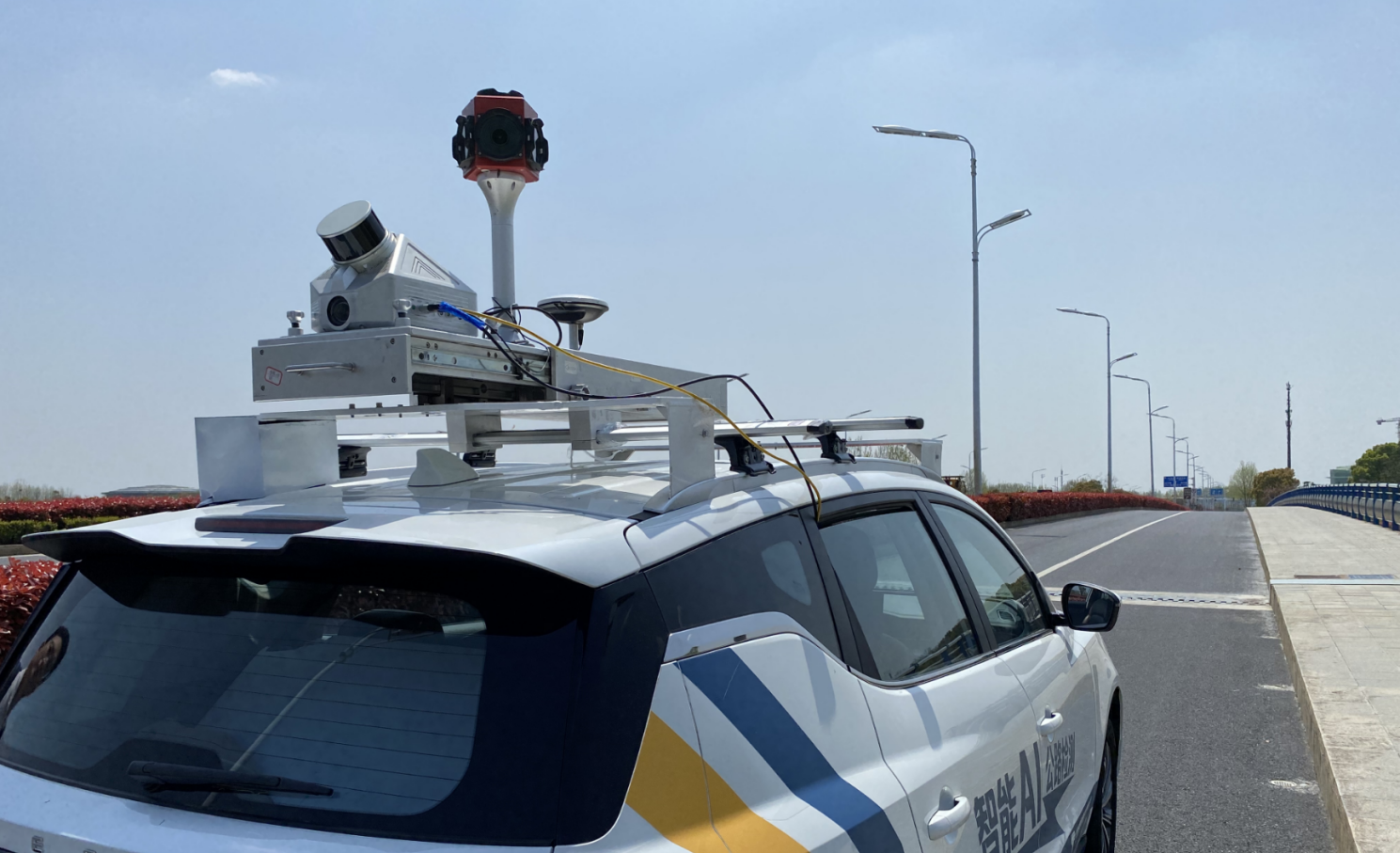
LiMobile M1 System Specifications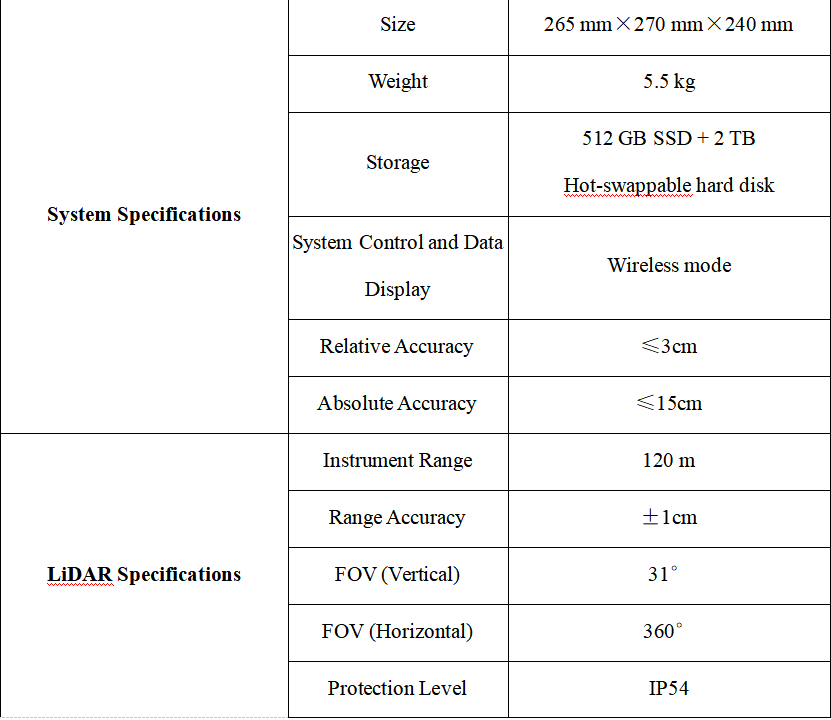
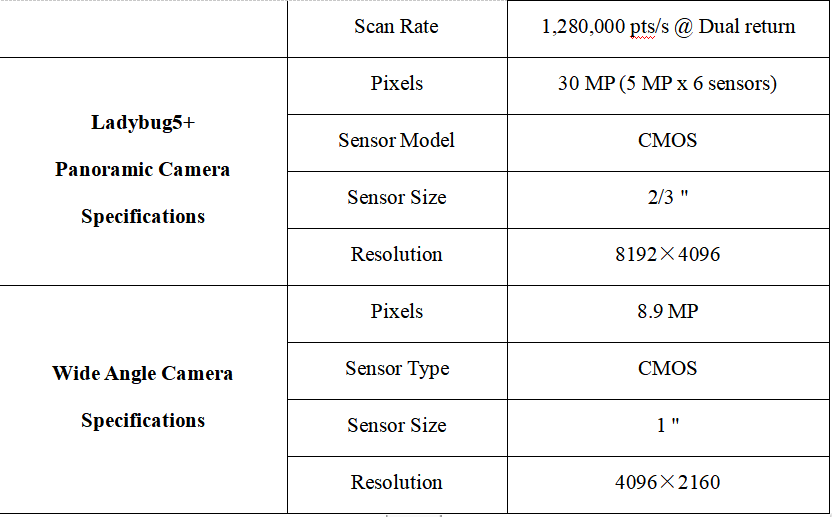
2. Data Processing
After completing the data acquisition, the LiGeoreference software can calculate the collected data with a single click, quickly obtaining high-precision point cloud data.

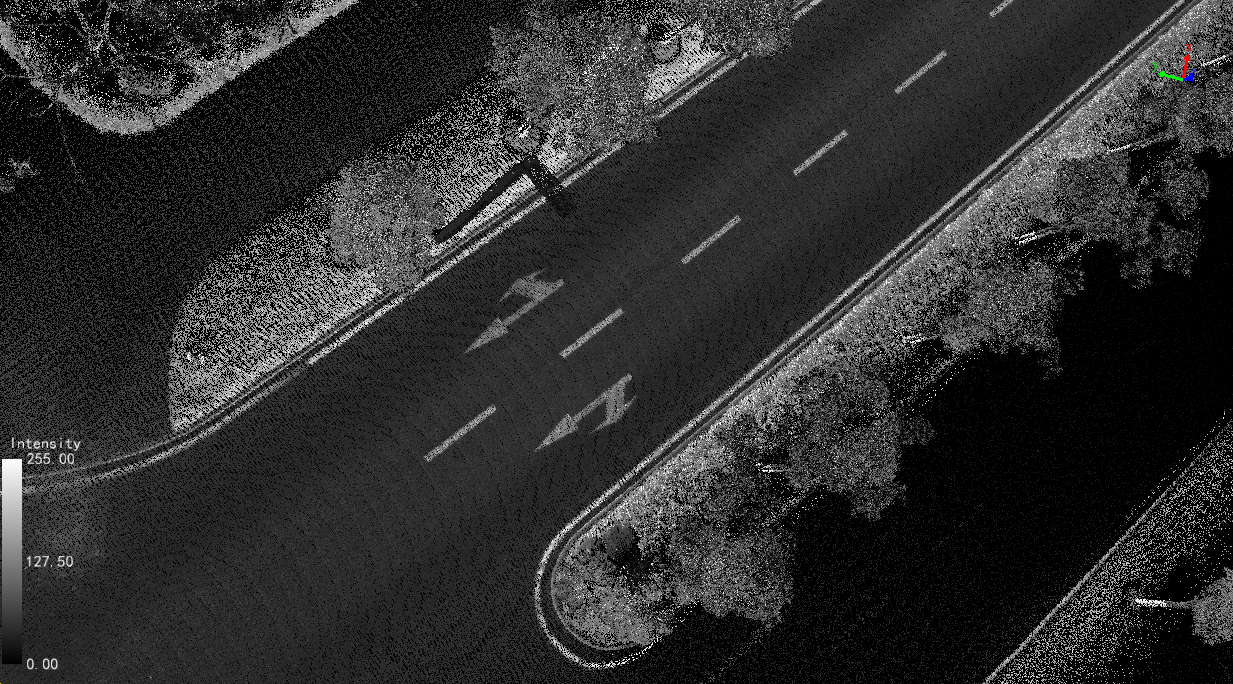

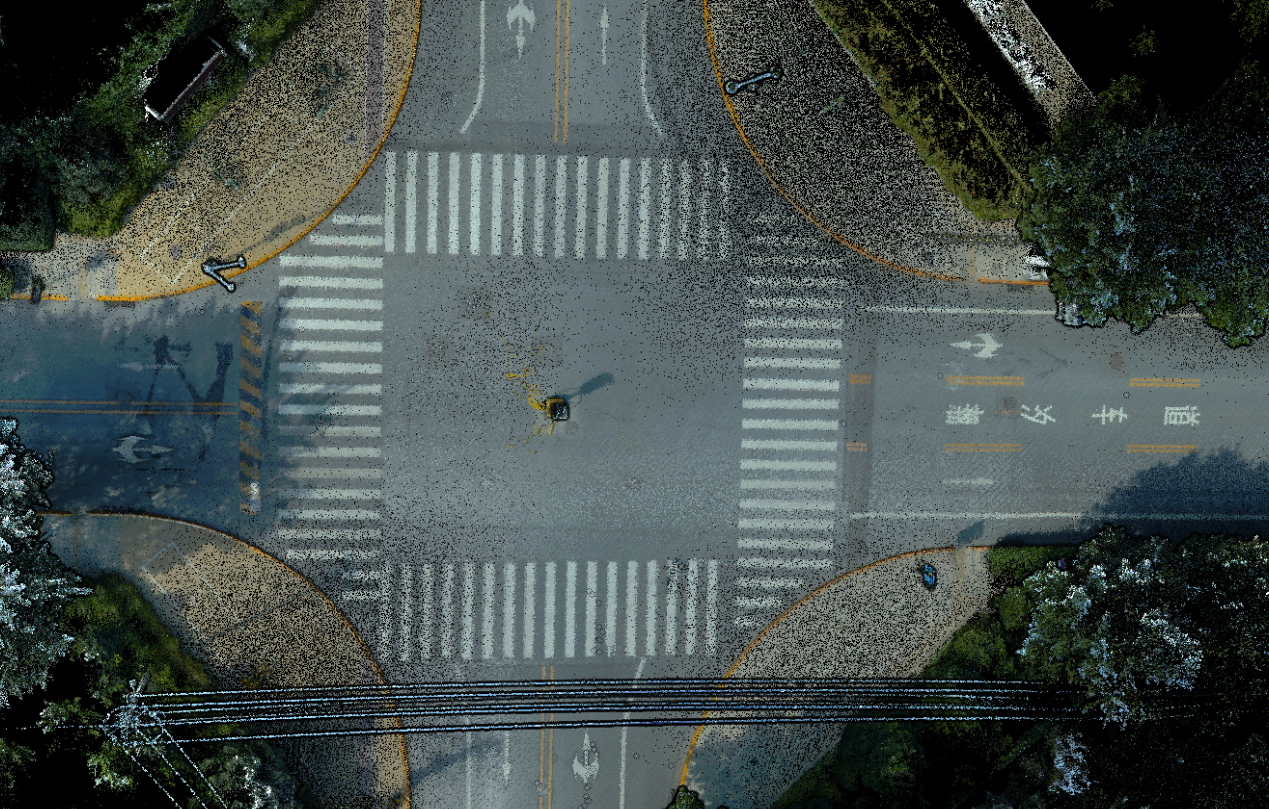 Road point cloud data
Road point cloud data
3. HD Map Production
The HD map drawing uses the LiDAR360 MLS software developed by GVI for intelligent extraction and analysis of 3D features. It can flexibly integrate the point cloud and image data collected by various types of mobile measurement devices, such as vehicle-mounted, backpack, or handheld devices available on the market. The software is based on efficient indexing structures for massive point cloud data and artificial intelligence algorithms. It performs point cloud data editing, extraction, analysis, and three-dimensional vectorization of road features, providing features such as "full functionality, fast operation, intelligent efficiency, and user-friendly interaction." It has formed a complete production chain for vehicle-mounted point cloud data processing, high-precision mapping, road component survey, and maintenance. The output data from the software can be seamlessly integrated with various GIS, CAD, and simulation platforms, widely applied in high-precision map production, facade measurement, road survey, and maintenance fields. LiDAR360MLS utilizes intelligence to assist in information extraction and digitally depicts the vast world. The specific drawing process is as follows:
(1)Load the data and select an appropriate display mode.
The software supports loading point clouds, trajectories, and image data, and allows overlaying and browsing multiple data sources for measurement. Depending on the analysis requirements, you can select the best display mode to better reflect the data characteristics and check the data quality more intuitively.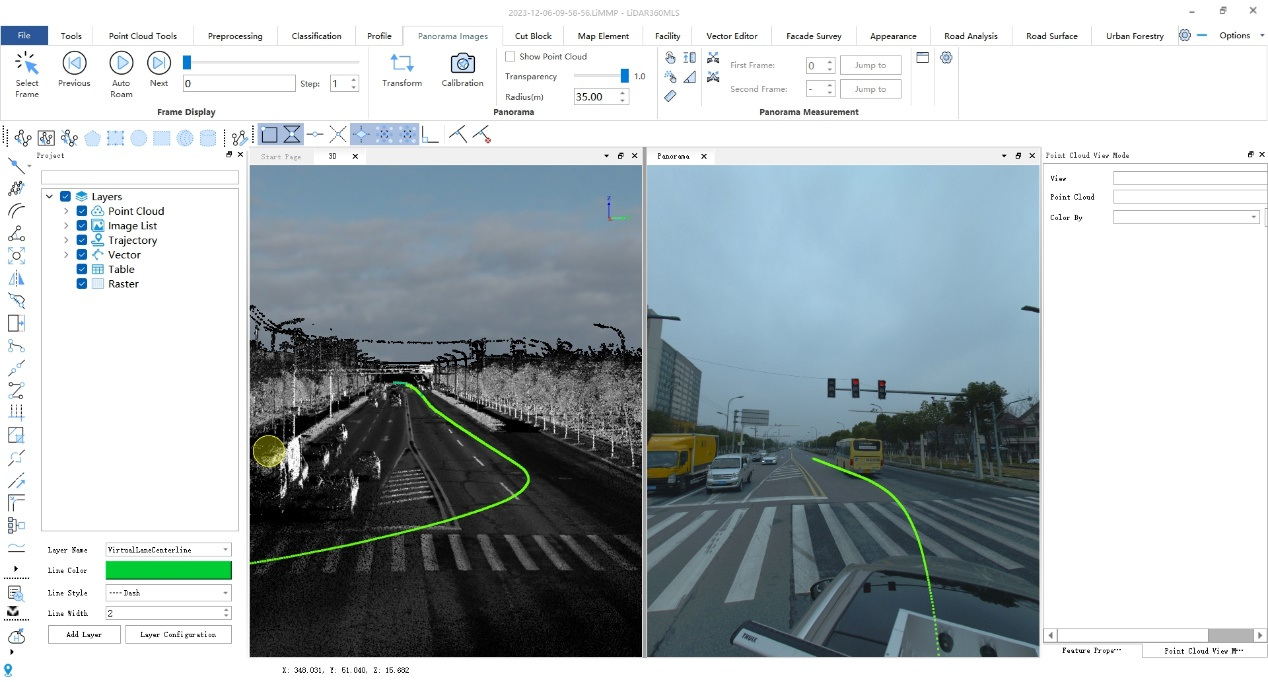
(2)Layer settings and attribute configuration
The software supports customizing project-specific layers and attribute fields, meeting the diverse requirements of different industry standards and various types of applications. It also allows configuring layer styles and predefining field content information for convenient attribute editing and data entry.

(3)Road shape drawing
This step is primarily used to generate vectorized results related to road shape features. The vectorization result generation supports both semi-automatic and manual methods.
① Automatic detection of road edges
By clicking the left mouse button to select two points, the starting point and direction point are obtained. Along the selected direction, automatic detection of road edges can be performed starting from the initial point.

② Semi-automatic lane detection
This includes solid or dashed lane lines. By clicking the left mouse button to select two points, the starting point and direction point are obtained. Along the selected direction, automatic lane detection can be performed starting from the initial point.
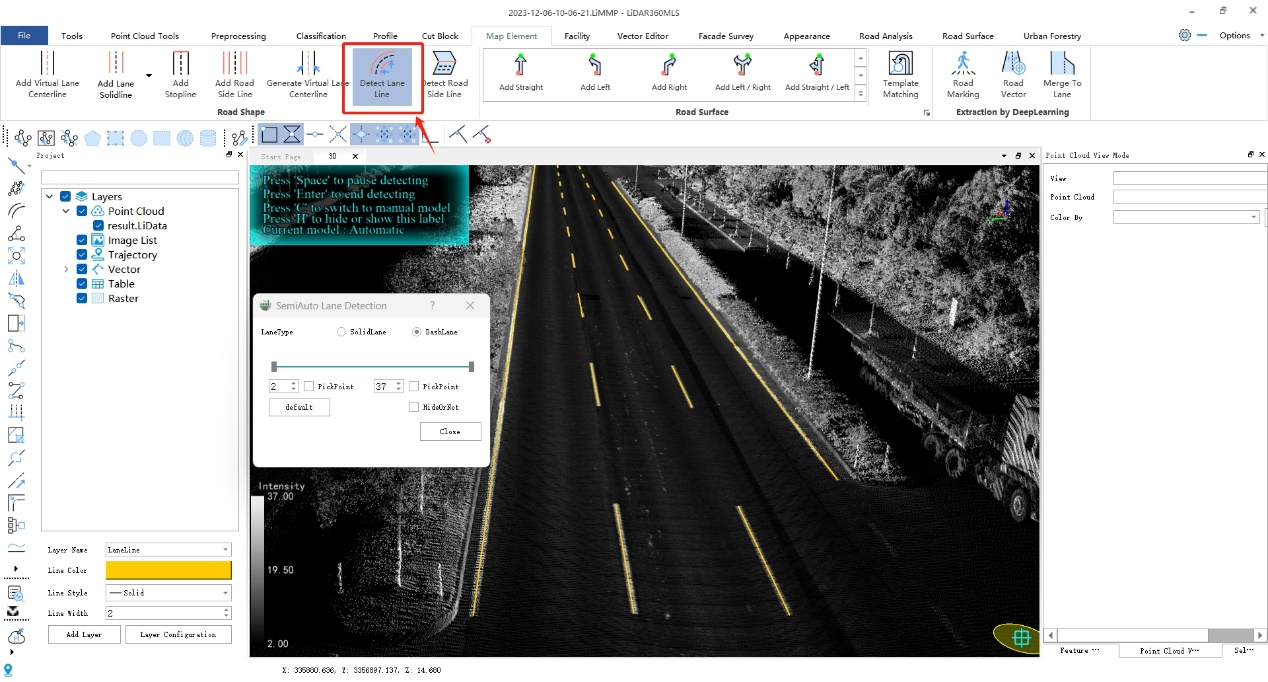
③ Quick generation of lane centerline
Based on the lane lines on the left and right sides of the same lane, a one-click operation can generate the lane centerline. You can choose between solid or dashed lane markings.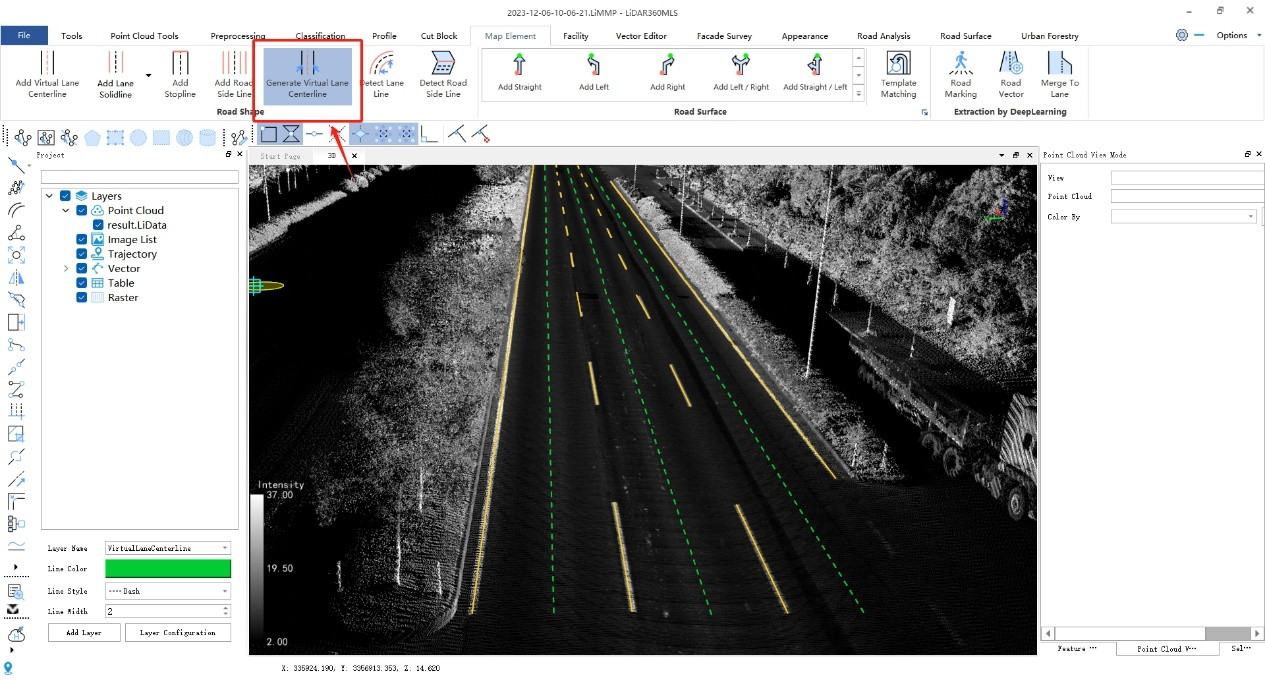
(4)Road surface drawing
This step is primarily used for the vectorization production of various ground markings, including road arrows, pedestrian crossings, speed reduction signs, no-parking lines, and other types of ground signage.
①Fully automatic extraction of road surface markings
Automated extraction of ground markings using deep learning techniques, processing large volumes of point cloud data.
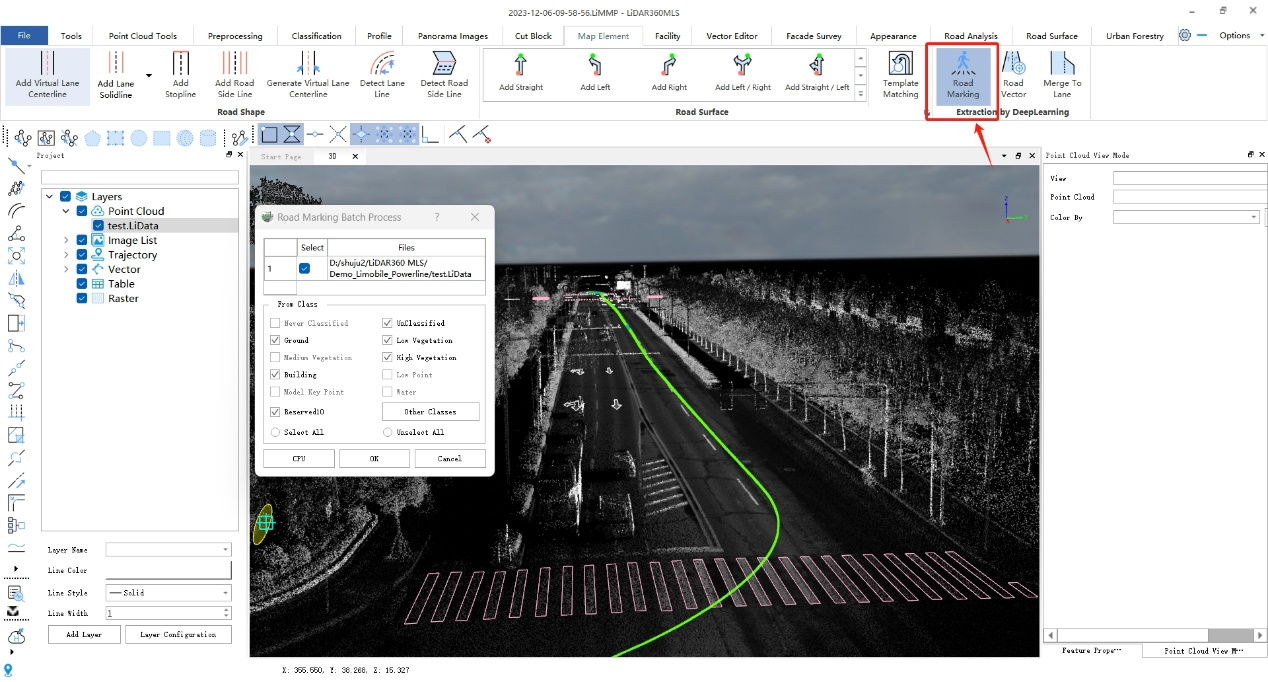
②Template matching
The software comes with built-in arrow templates according to Chinese national standards, as well as pedestrian crossing warnings, speed reduction signs, no U-turn signs, and other ground markings in accordance with Chinese national standards. By using three key points to select point cloud data, automatic template matching can be performed, directly obtaining vectorized results that fit the point clouds.
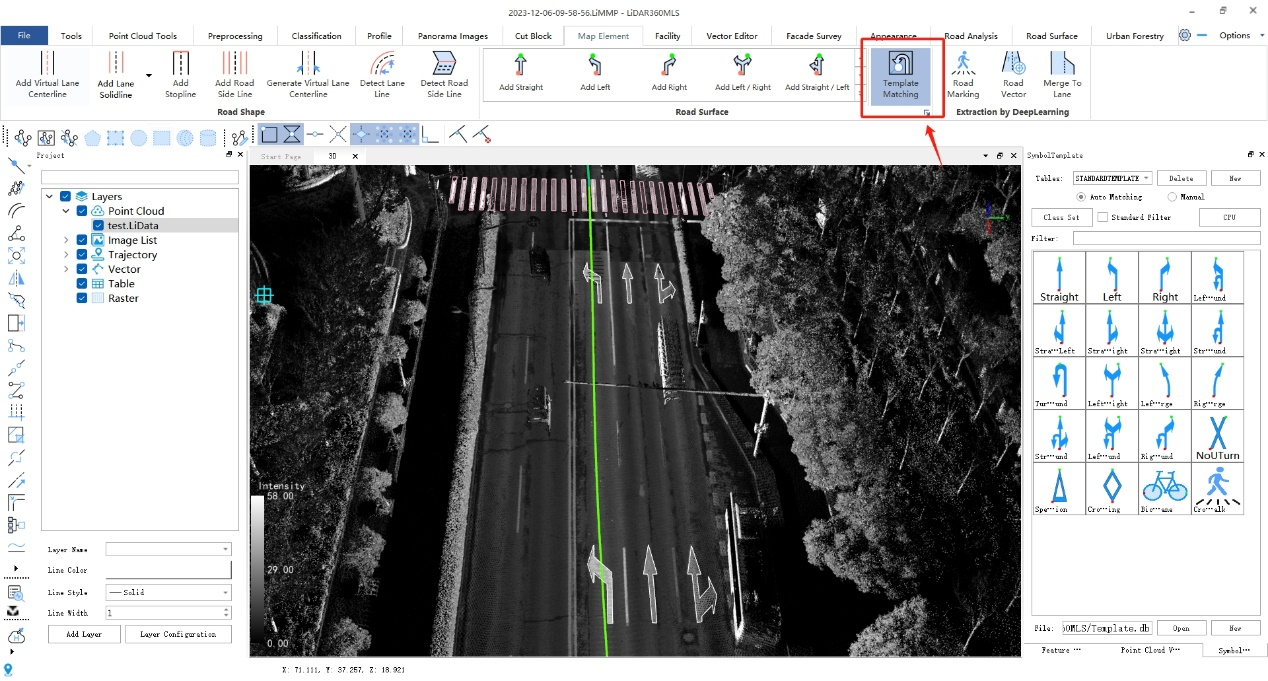
③Pedestrian crossings
Using three key points, pedestrian crossings can be vectorized and created.
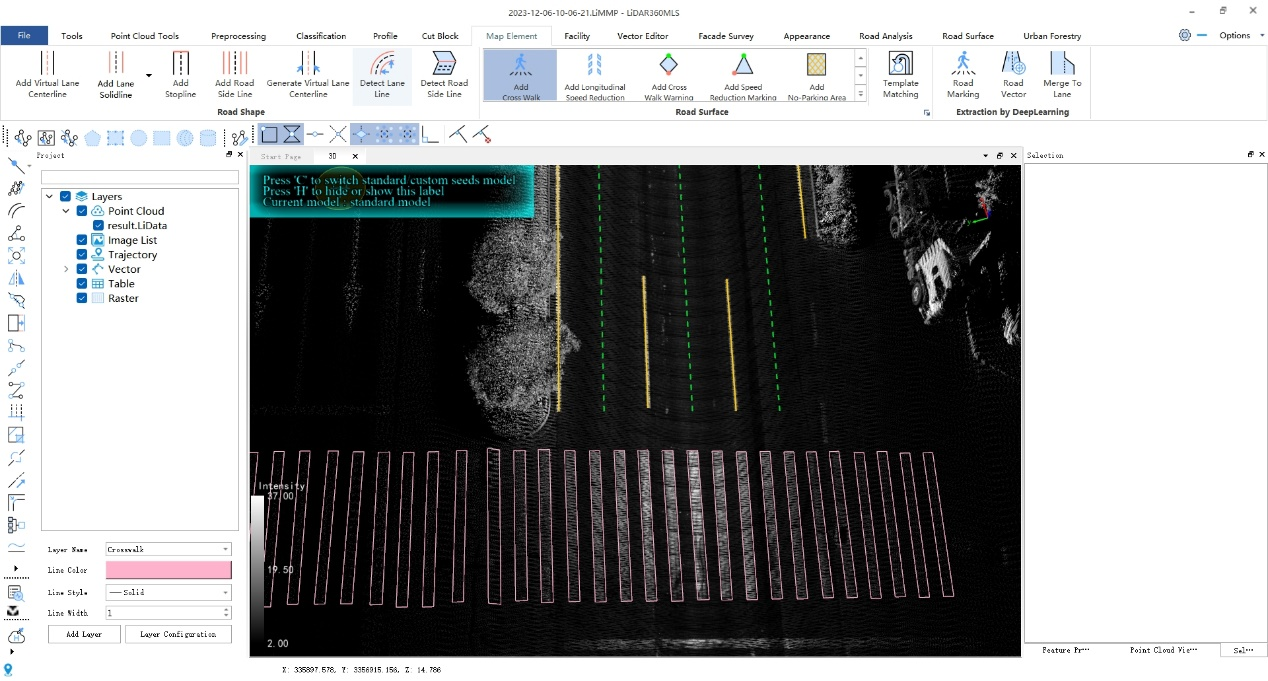
④Arrows
Clicking on the start and end points of the arrow determines the position and direction of the road surface markings.

⑤Pedestrian crossing warning
Selecting two key points allows for the vectorization and creation of pedestrian crossing warnings.
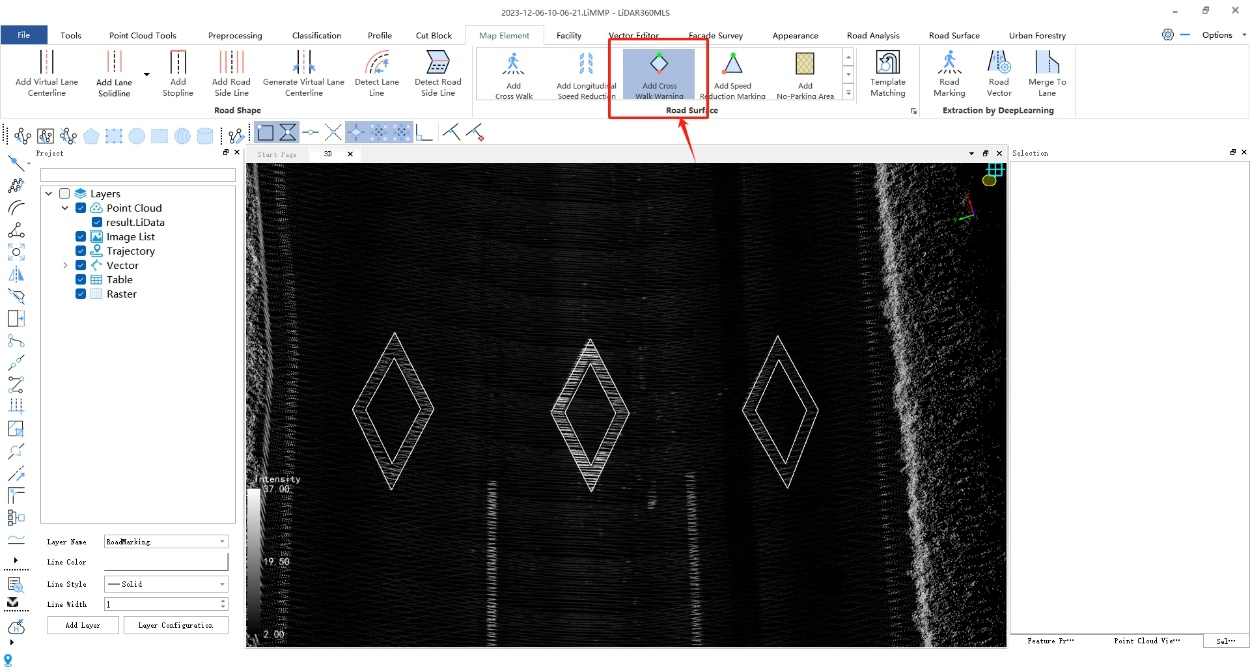
⑥Other road surface drawings
LiDAR360 MLS supports the drawing of directional arrows, lateral markings, and pavement graphic symbols for road surfaces.
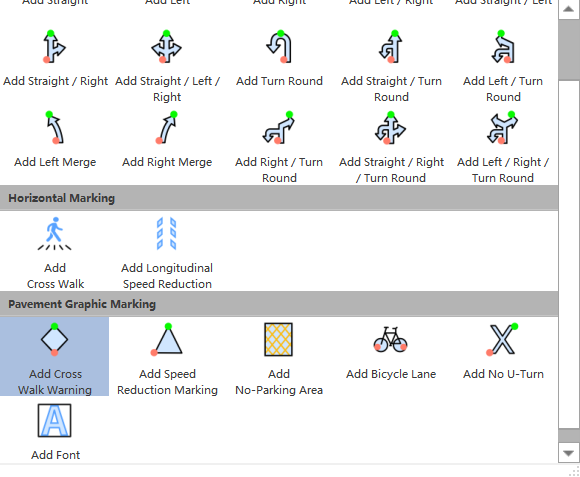
(5)Road facility drawing
①One-click detection of road facilities
Using panoramic images as assistance, the software can automatically recognize traffic signs, manhole covers, surveillance cameras, bus stops, traffic lights, garbage bins, streetlights, and underwater grates for road facilities.
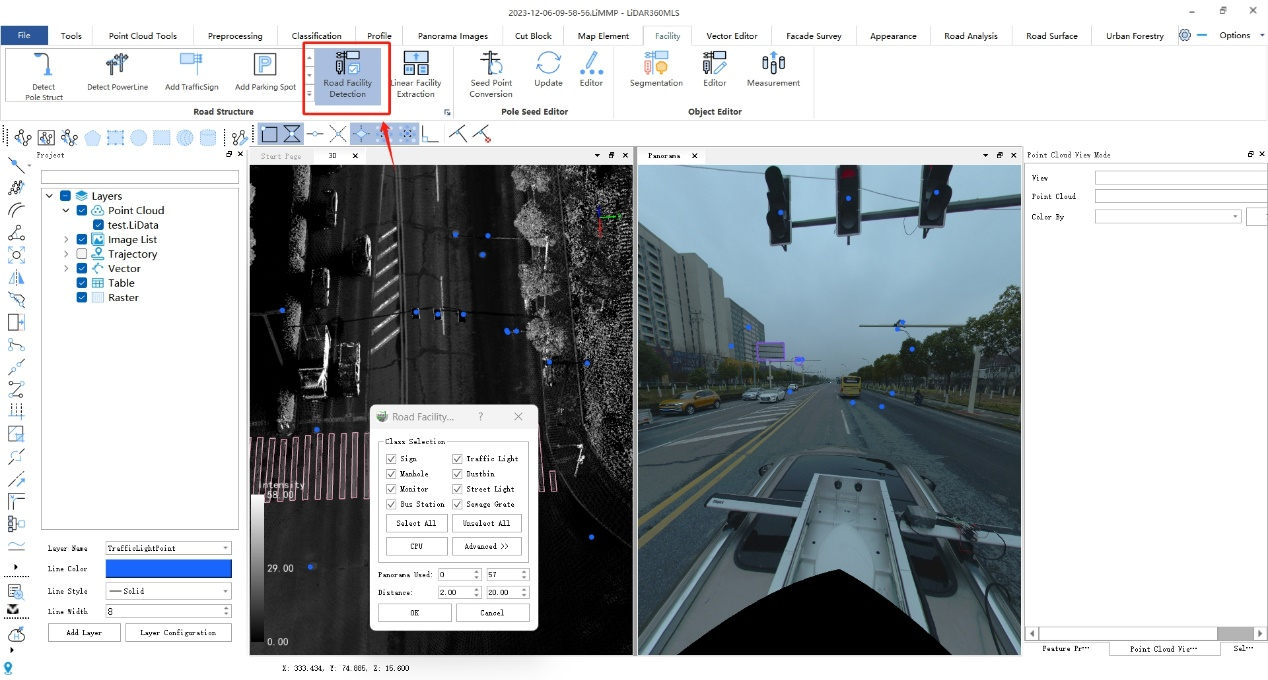
②Streetlight detection
Streetlights can be automatically detected by using single points, two points, polygons, or grabbing methods. This allows for the automatic extraction and drawing of pole-like objects such as lamp posts.
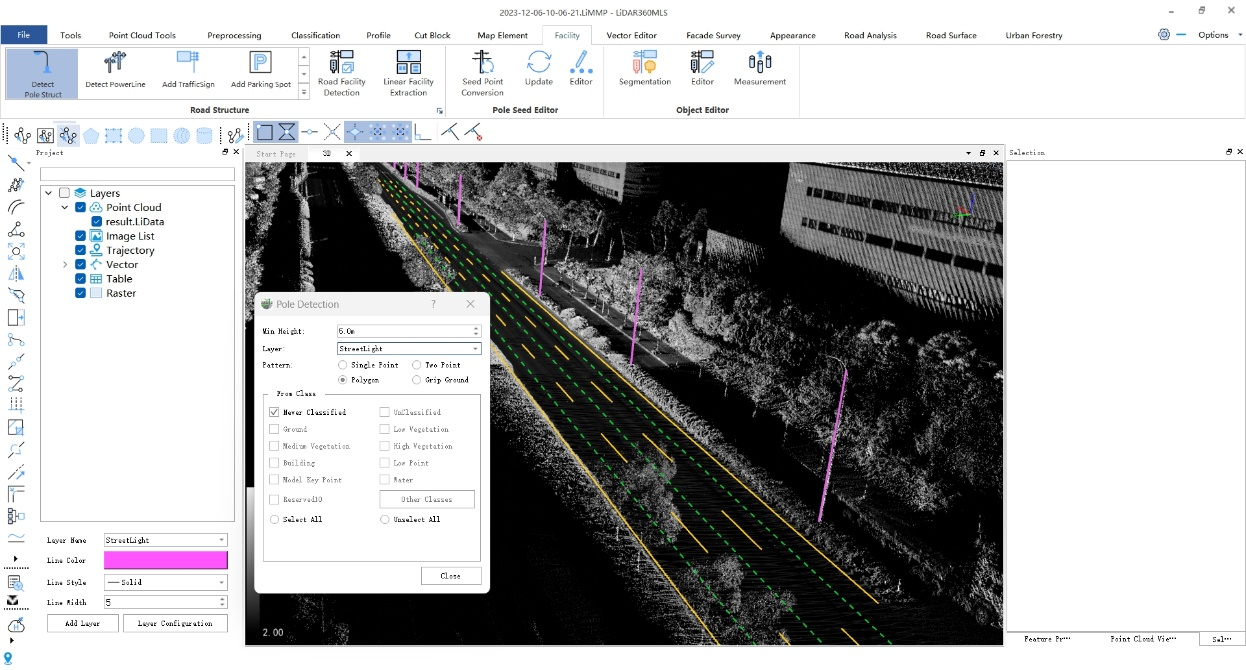
③Adding traffic signs
Select the desired shape to draw, and the drawing preview will be displayed in real-time at the mouse cursor. Use the right mouse button to bring up a dialog box to adjust the size and double-click to confirm the current traffic sign.
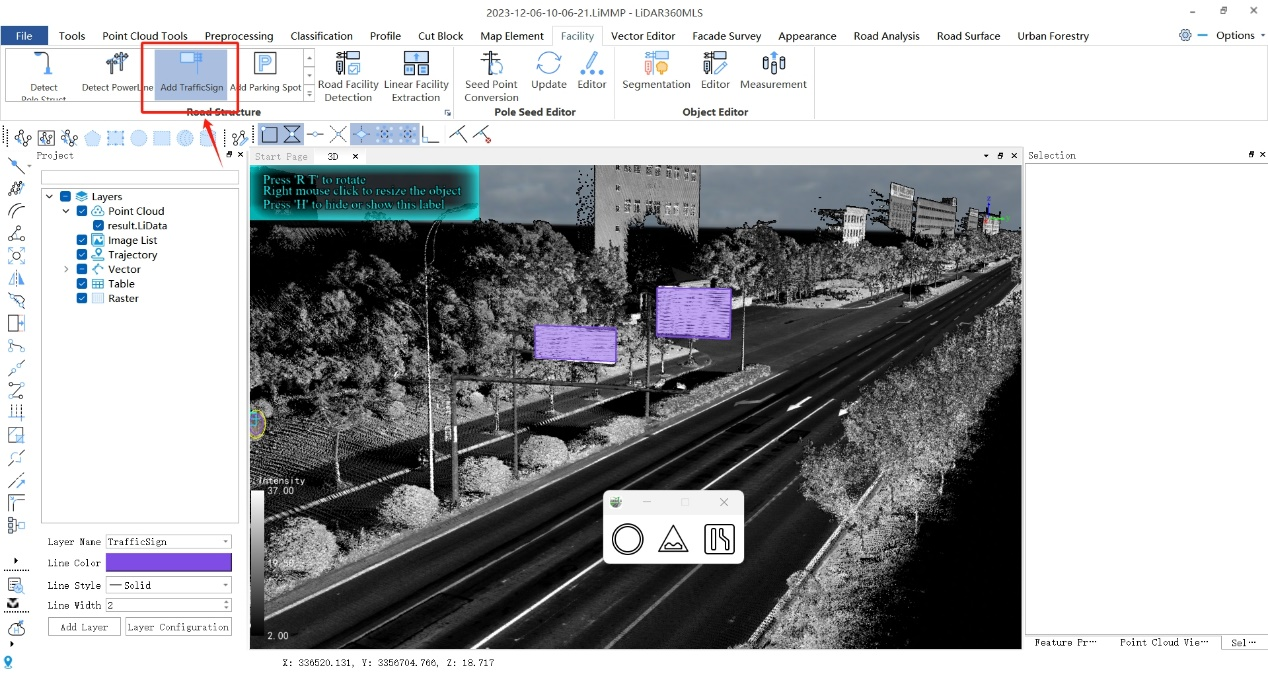
4. Exporting the results
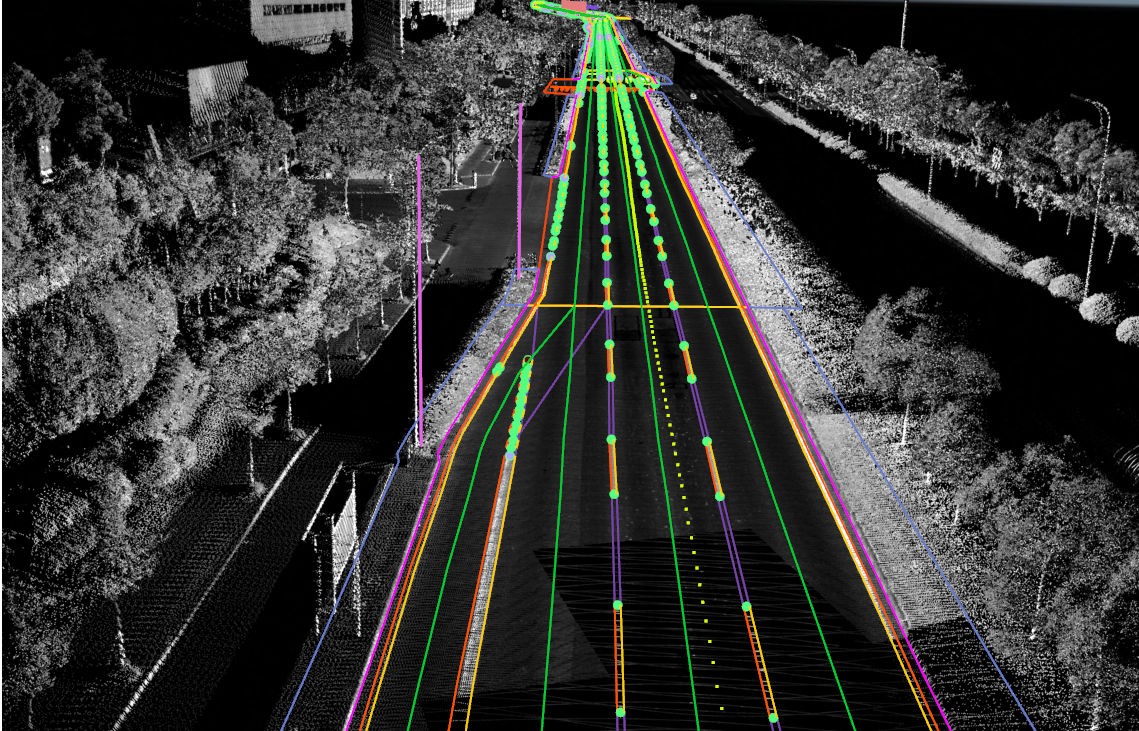
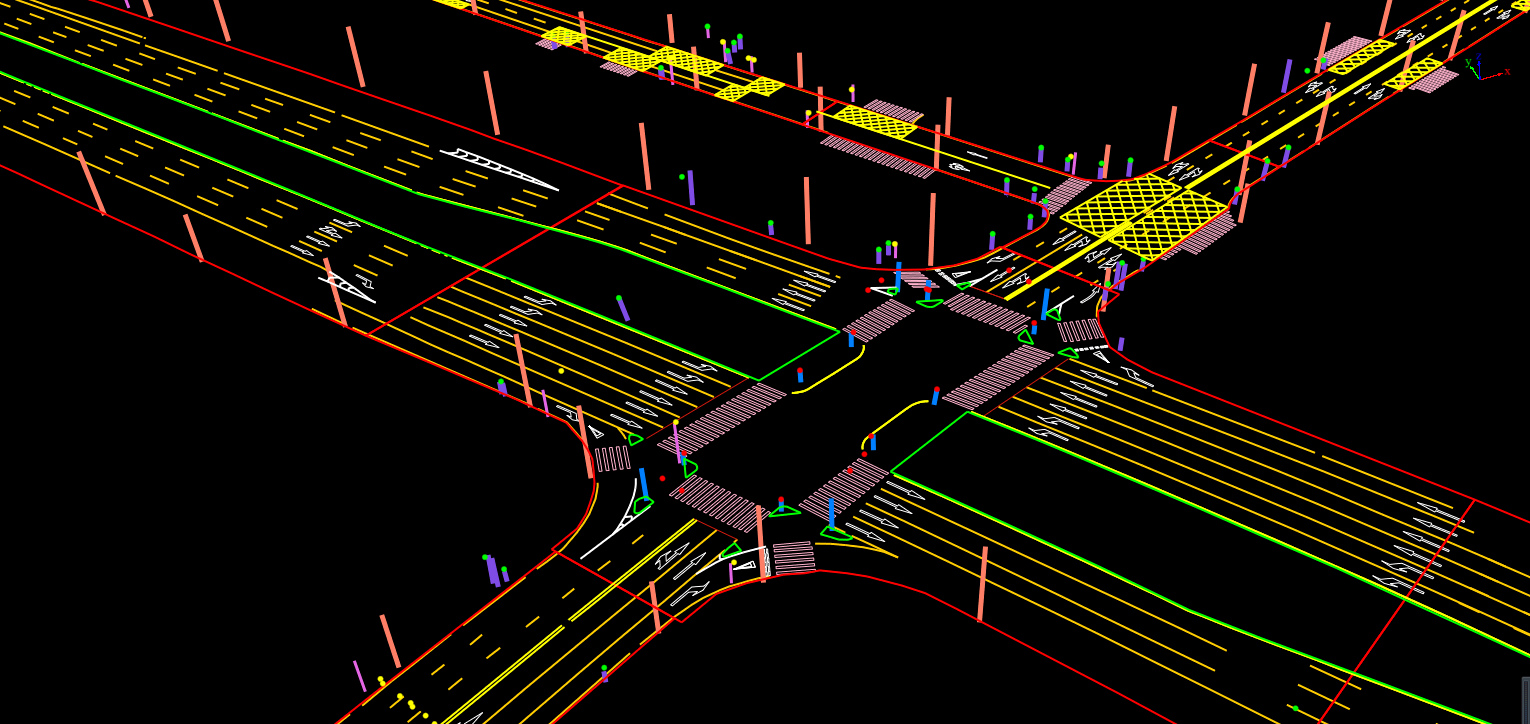
HD map based on LiDAR360MLS
Conclusion
LiDAR360 MLS has significant advantages in HD map production. Through the LiMobile vehicle-mounted mobile mapping system, it is possible to efficiently obtain HD map data, providing new possibilities for map creation and updates. This system can be applied not only in urban planning and land surveying but also provides crucial support for the development of emerging technologies such as intelligent transportation and autonomous driving. With its high precision and efficiency, LiDAR360 MLS opens up new opportunities for the application of geographic information and spatial data fields.
